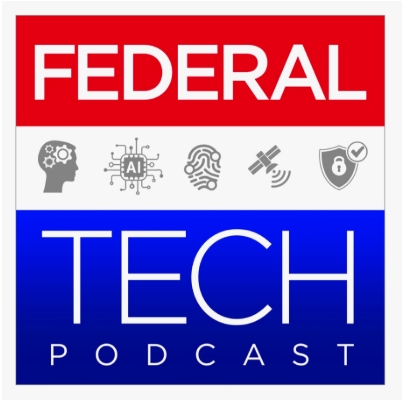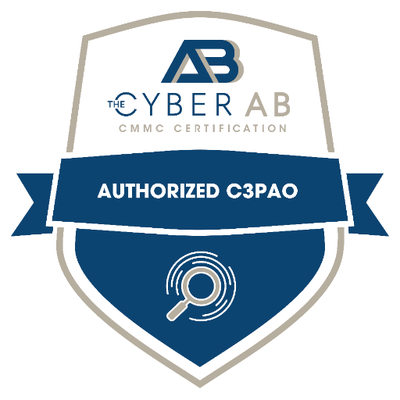Introduction
Today, government agencies rely heavily on cloud services to store sensitive data and deliver critical services. However, ensuring the security of these cloud environments is crucial, demanding robust measures to safeguard sensitive information. This is where the Federal Risk and Authorization Management Program (FedRAMP), comes into play.
FedRAMP establishes a standardized approach to evaluate the security of cloud service providers (CSPs) seeking to provide service to the federal government. Multi-factor authentication (MFA) emerges as a crucial security control as part of this rigorous process, ensuring a higher level of security for cloud services used by government agencies.
Introduction to MFA and Its Importance in FedRAMP
MFA is a security protocol that requires users to provide two or more verification factors to gain access to a resource, such as an application, online account, or a virtual private network (VPN). MFA combines two or more independent credentials: what the user knows (password), what the user has (security token), and what the user is (biometric verification). This layered defense significantly challenges unauthorized parties aiming to access sensitive locations, devices, or data.
Technical Underpinnings of MFA
At the core of MFA’s efficacy are the distinct categories of authentication factors it utilizes, comprising:
- Knowledge factors: Information known to the user, such as passwords or PINs.
- Possession factors: Items possessed by the user, like smart cards or mobile apps generating time-based one-time password (TOTPs). This can also include geographic location.
- Inherence factors: Biometric characteristics unique to the user, including fingerprints or facial recognition.
- These factors, especially when combined, create a robust barrier against unauthorized access, aligning with FedRAMP’s stringent security requirements.
How MFA Works: A Technical Breakdown
The authentication process begins when a user attempts to access a resource protected by MFA, the process initiates with the user submitting their primary authentication factor, usually a password. Upon successful verification of the password, the server triggers a request for a second factor. If the second factor is a TOTP generated by an authenticator app, the server, knowing the shared secret and the current time, calculates the expected TOTP value. The user enters the TOTP displayed on their authenticator app, which the server compares against its calculated value. Only if both factors are verified successfully does the server grant access to the user.
MFA Requirements for CSPs Pursuing FedRAMP Authorization
- FedRAMP’s MFA mandates are firmly rooted in the comprehensive control catalog of NIST Special Publication 800-53. To achieve FedRAMP authorization, CSPs must comply with stringent identification and authentication (IA) and cryptography requirements, which are the cornerstone of a secure cloud service environment.
IA-2: Identification and Authentication (Organizational Users)
- Requirement: Establish and implement policies and procedures for identifying and authenticating organizational users who access organizational information systems.
- Implementation Guidance: CSPs must ensure that user authentication processes are robust, compliant with FedRAMP standards, and tailored to the risk level of the user’s role within the organization.
IA-2 (1): Multi-factor Authentication to Privileged Accounts
- Requirement: Requires MFA to gain access to systems for privileged accounts.
- Implementation Guidance: CSPs are required to implement phishing-resistant MFA methods, such as hardware tokens or biometrics, in accordance with NIST SP 800-63B, especially for environments demanding higher assurance levels.
IA-2 (2): Multi-factor Authentication to Non-privileged Accounts
- Requirement: Extends the requirement of MFA to non-privileged accounts to secure system access.
- Implementation Guidance: CSPs must apply consistent MFA for all user accounts, utilizing methods that effectively balance security with usability i.e., the CISA’s Zero Trust principles.
IA-2 (5): Individual Authentication with Group Authentication
- Requirement: This control also requires the use of MFA when shared accounts or authenticators are employed.
- Implementation Guidance: CSPs must enforce individual authentication for all users before granting access to the shared accounts or resources. Furthermore, the shared account must also enforce the use of MFA.
IA-2 (6): Access to Accounts — Separate Device
- Requirement: Ensures one factor of MFA must originate from a separate device.
- Implementation Guidance: CSPs are required to use separate physical devices for MFA components, like tokens or mobile devices, to enhance security measures against compromised user devices.
IA-2 (8): Access to Accounts — Replay Resistant
- Requirement: Demands authentication mechanisms that are resistant to replay attacks.
- Implementation Guidance: CSPs should employ authentication solutions like cryptographic tokens that cannot be reused, effectively safeguarding against the replay of credentials.
IA-2 (12): Acceptance of PIV Credentials
- Requirement: Obliges the system to accept Personal Identity Verification (PIV) credentials from users for access to information systems.
- Implementation Guidance: CSPs should integrate systems to accept and validate PIV credentials, allowing for a standardized authentication process across federal entities.
Aligning IA Controls with Assurance Levels
FedRAMP emphasizes robust authentication practices, mandating compliance with levels defined in NIST Special Publication 800-63B and its companion documents, 800-63A for Identity Assurance Level (IAL) and 800-63C for Federated Assurance Level (FAL).
Assurance Levels:
Within the IA framework, it is essential to understand the graded assurance levels that span from IALs, which ensure the identity proofing of users, to Authenticator Assurance Levels (AALs) and FALs, which secure authentication and federation processes, respectively.
Identity Assurance Levels:
- IAL1: does not require evidence that the applicant is linked to the identity claimed.
- IAL2: requires evidence to establish that the claimed identity is real and that the applicant is the rightful owner of that identity. This level is suited for environments where the likelihood and impact of identity misrepresentation are moderate.
- IAL3: involves more stringent identity proofing and requires physical presence. It is reserved for situations where the risk of unauthorized access is very high.
Authenticator Assurance Levels:
- AAL1: provides single-factor authentication.
- AAL2: introduces two-factor authentication, significantly enhancing security by requiring two different factors.
- AAL3: offers the highest level of security, typically incorporating a physical token that is resistant to duplication and requires cryptographic methods.
Federation Assurance Levels:
- FAL1: allows for assertions to be passed in a bearer token that is cryptographically signed.
- FAL2: adds user authentication at the identity provider (IdP) before an assertion is issued, plus encrypted assertion.
- FAL3: introduces the requirement for a cryptographic assertion tied to the client session, ensuring that the assertion is user-specific and cannot be replayed.
Cryptographic Protection
FedRAMP mandates the use of cryptographic modules compliant with Federal Information Processing Standards (FIPS) 140-2 and 140-3 for encryption within MFA solutions. This requirement is specifically provided by SC-13 (Cryptographic Protection), which mandates the use of FIPS-validated cryptography and National Security Agency (NSA) approved cryptography for the generation of one-time passwords (OTPs) for MFA.
There are two notable exceptions to the FIPS 140 requirement for authenticators. These are:
- On low baseline systems, FIPS 140 validated crypto modules are only required for MFA verifiers, not authenticators.
- On Moderate baseline systems, user-provided (“bring-your-own”) authenticators are exempt from having to meet FIPS 140 requirements, particularly in the government-to-public use case. Note: This exemption does not apply to CSP personnel.
How CSPs can Verify FIPS 140 Compliance:
CSPs can confirm FIPS 140 compliance through the following measures:
- Vendor Documentation: Most MFA solution providers explicitly state FIPS 140 validation status for their cryptographic modules within their product documentation and marketing materials—request documentation from vendors confirming FIPS 140 validation for cryptographic modules used in their MFA implementation.
- Cryptographic Module Validation Program (CMVP) Listing: The National Institute of Standards and Technology (NIST) maintains a publicly accessible online database listing all FIPS 140 validated modules. CSPs can search this database (https://csrc.nist.gov/projects/cryptographic-module-validation-program) using the vendor’s name or specific product details to verify the validation status.
Leveraging MFA solutions with non-FIPS cryptographic modules is acceptable when:
- FIPS-validated version has a known vulnerability;
- Feature with vulnerability is in use;
- Non-FIPS version fixes the vulnerability;
- Non-FIPS version is submitted to NIST for FIPS validation; and
- POA&M is added to track approval and deployment when ready
Beyond the Basics: Challenges & Additional Considerations
While ensuring compliance with the above FedRAMP requirements, here are some additional considerations for CSPs:
1. Mobile Device Challenges
The prevalent use of mobile devices for soft token introduces concerns over the integrity of MFA solutions, particularly when devices are not company-issued. Another issue lies in the reliance on devices’ native encryption capabilities, potentially impacting compliance with SC-13 encryption requirements.
Potential solutions
- Enforce strong mobile device security policies: implement stringent security measures like enforcing passcodes, screen locks, and encryption across all authentication devices to form a solid first line of defense.
- Leverage mobile devices that utilize FIPS-validated cryptographic modules: Authenticator apps often rely on the native cryptography of mobile devices to achieve FIPS 140 compliance. CSPs are required to verify that the specific configurations and versions of selected mobile devices have been tested under the CMVP before employing these devices for MFA.
- Implement Containerization or Mobile Device Management (MDM): For non-company-issued devices, employing containerization or MDM technologies allows for the establishment of secure environments. These tools enable the enforcement of robust FIPS-compliant encryption and other vital security settings, centralizing control and bolstering defense mechanisms.
- Educate users about mobile device security best practices: Educating users on mobile security best practices, including the identification and reporting of phishing attempts, is essential. Such knowledge empowers users to act as proactive guardians of their devices, further enhancing the overall security posture.
2. Privileged vs. Non-Privileged Users
Another critical consideration in MFA implementation for CSPs is the distinction between privileged and non-privileged users within a FedRAMP boundary. Privileged users, such as system administrators or IT personnel, often possess elevated access privileges and wield considerable control over cloud resources. As such, they require more robust authentication mechanisms to mitigate the risk of unauthorized access and potential data breaches.
In contrast, non-privileged users may have more limited access rights and interact with cloud services primarily for business or operational purposes. While still subject to MFA requirements, the authentication needs of non-privileged users may differ from those of privileged users, necessitating tailored approaches to accommodate varying levels of access and risk.
Potential solutions
- Customize MFA Requirements Based on User Roles: Implement differentiated MFA strategies for privileged versus non-privileged users, applying stricter authentication protocols and additional security measures for privileged accounts.
- Stricter AAL for Privileged Users: For privileged accounts, enforce higher AALs as recommended by NIST SP 800-63B, incorporating stronger authentication mechanisms.
- Session Monitoring and Least Privilege Principles: Enhance security for privileged users by monitoring sessions for unusual activity and applying the principle of least privilege, ensuring users have only the access necessary to perform their duties.
3. Ongoing Monitoring and Improvement
The cybersecurity landscape is dynamic, with new threats emerging continually. MFA implementations must evolve to remain effective, necessitating ongoing vigilance and adaptability.
Potential solutions
- Regularly auditing MFA usage: conducting thorough MFA usage audits helps identify anomalies or gaps in security, and user adoption patterns allowing for timely remediation.
- Conducting penetration testing: simulate cyberattacks to identify and address any vulnerabilities in MFA implementation.
- Conducting Phishing Campaigns: by simulating phishing attacks that attempt to circumvent MFA protections, employees can experience firsthand the tactics used by cyber adversaries. This approach not only highlights the importance of vigilance even when MFA is in place but also reinforces best practices in identifying and responding to sophisticated phishing attempts.
- Staying updated on evolving threats and best practices: Keeping abreast of the latest cybersecurity developments and adjustments to FedRAMP guidelines ensures that MFA strategies remain current and effective.
By systematically addressing these challenges with targeted solutions, CSPs can significantly enhance the security and compliance of their MFA implementations within the FedRAMP framework. This structured approach not only meets regulatory requirements but also fortifies cloud services against a spectrum of cyber threats, ultimately fostering a secure and trusted environment for government agencies.
Streamline Your FedRAMP Authorization Journey with Fortreum's Advisory and Assessment Services
Complying with FedRAMP’s MFA requirements can seem like a complex task. But navigating the journey doesn’t have to be a solo endeavor.
Fortreum is a leading provider of FedRAMP advisory services, offering expert guidance, comprehensive assessments, and tailored solutions to assist CSPs in achieving and maintaining FedRAMP authorization.
Visit Fortreum today and connect with our experts to discuss your unique needs. We offer:
- Comprehensive FedRAMP assessments: Gain a clear understanding of your security posture and identify areas for improvement.
- Tailored MFA implementation guidance: Receive expert advice on selecting and implementing an MFA solution that aligns with your specific requirements and FedRAMP compliance needs.
- Ongoing support and expertise: Benefit from Fortreum’s ongoing support throughout your FedRAMP journey, ensuring you stay up-to-date and compliant.
Empower your cloud security journey. Partner with Fortreum today!
FAQs
1. What types of authentication factors are acceptable for FedRAMP MFA?
For FedRAMP MFA, authentication factors must be validated under FIPS 140-2 or the more recent FIPS 140-3 standards. While FIPS 140-2 compliance is currently acceptable, CSPs are encouraged to transition to FIPS 140-3 validated factors due to its enhanced security requirements.
2. How often must MFA be used to access FedRAMP-authorized systems?
MFA must be used every time users access FedRAMP-authorized systems, regardless of the frequency of access. This ensures consistent protection against unauthorized access and strengthens the overall security posture.
3. Are there any exceptions to the MFA requirements in FedRAMP?
Exceptions to MFA requirements in FedRAMP are rare. However, agencies may allow CSPs to address compliance gaps through Plans of Action and Milestones (POA&M) to align with NIST 800-63B standards.
4. How does FedRAMP verify that CSPs properly implement MFA?
FedRAMP ensures proper MFA implementation by mandating CSPs adhere to NIST Special Publication 800-63B, utilize FIPS 140 validated encryption for MFA tools, and maintain consistency with security controls inherited from underlying FedRAMP Authorized infrastructure as a service (IaaS) or platform as a service (PaaS). Another method by which FedRAMP verifies CSPs’ proper implementation of MFA is through rigorous assessments conducted by accredited Third-Party Assessment Organizations (3PAOs).
5. How can CSPs ensure MFA solutions are both secure and user-friendly?
Balancing security with user experience involves selecting MFA methods that are both robust against unauthorized access and convenient for legitimate users. Techniques include adopting adaptive authentication that adjusts the authentication challenge based on the user’s risk profile or context, utilizing biometric authentication for ease of use, and ensuring MFA prompts are clear and intuitive. Regular feedback from users can also guide CSPs in refining their MFA approach for better usability.
6. Can MFA methods vary based on user roles within an organization?
Yes, tailoring MFA methods to user roles enhances security by applying stricter authentication for roles with access to more sensitive information. For instance, administrators or users accessing highly confidential data might be required to use hardware tokens or biometric authentication, whereas less sensitive roles may utilize mobile push notifications or OTPs. This risk-based approach ensures an appropriate level of security across different user segments.
7. How does FedRAMP’s requirement for phishing-resistant MFA impact CSPs’ choice of authentication methods?
FedRAMP’s requirement for phishing-resistant MFA compels CSPs to select authentication methods that are less susceptible to social engineering and phishing attacks. This typically means moving beyond simple knowledge-based factors like passwords to include tokens, biometrics, or push notifications that can offer a more secure verification process. It also influences the need for CSPs to adopt modern authentication protocols like FIDO2 that provide stronger defense mechanisms against phishing.
8. What strategies can CSPs employ to balance user convenience with the security requirements of MFA?
To balance user convenience with security, CSPs can implement adaptive authentication methods that adjust the level of MFA required based on context, such as user location, device security posture, and network trustworthiness. Additionally, using single sign-on (SSO) can reduce the frequency with which users must perform MFA, while still maintaining security. Biometric authentication can also provide a high level of security with minimal inconvenience for the user.
9. Can CSPs use mobile devices for MFA, and what are the implications for device management and security?
Yes, CSPs can use mobile devices for MFA. However, this introduces considerations for device management and security, such as ensuring that devices are updated with the latest security patches and managing the risk if a device is lost or stolen. Implementing MDM or Mobile Application Management (MAM) solutions can help CSPs manage and secure mobile devices used for MFA.
10. How should CSPs approach the integration of MFA with other FedRAMP-required security controls?
CSPs should take a holistic approach when integrating MFA with other FedRAMP security controls. This includes aligning MFA policies with access control, incident response plans, and user training programs. MFA should be part of a layered security strategy that includes encryption, network security, and physical security measures to create a defense-in-depth approach.
11. What ongoing practices should CSPs establish to ensure that their MFA solutions remain compliant with FedRAMP standards over time?
CSPs should establish ongoing practices like periodic risk assessments, regular reviews and updates to security policies, continuous user education and training, and routine system audits. These practices help ensure that MFA solutions not only stay compliant with current FedRAMP standards but are also prepared for future changes in the compliance landscape.
References and Further Reading
FedRAMP Documentation and Guidelines:
- General Services Administration. (2021). FedRAMP Program Overview. Retrieved from gov.
- National Institute of Standards and Technology. (2017). Digital Identity Guidelines (Special Publication 800-63-3). Retrieved from NIST Publications
- Federal Risk and Authorization Management Program. (n.d.). FedRAMP Marketplace. Retrieved from FedRAMP Marketplace
MFA and Security Standards:
- Burr, W. E., Dodson, D. F., & Polk, W. T. (2013). Electronic Authentication Guideline (Special Publication 800-63-2). National Institute of Standards and Technology. Retrieved from NIST Publications
- Grassi, P. A., Garcia, M. E., & Fenton, J. L. (2017). Digital Identity Guidelines: Authentication and Lifecycle Management (Special Publication 800-63B). National Institute of Standards and Technology. Retrieved from NIST Publications
Accessibility and Compliance:
- United States Access Board. (2017). Information and Communication Technology (ICT) Final Standards and Guidelines. Retrieved from Section 508
Continuous Monitoring and Cybersecurity:
- Bejtlich, R. (2013). The Practice of Network Security Monitoring: Understanding Incident Detection and Response. No Starch Press.
- Federal Risk and Authorization Management Program. (n.d.). Continuous Monitoring Strategy Guide. Retrieved from gov Resources
Other Resources
- https://www.fedramp.gov/assets/resources/documents/CSP_A_FedRAMP_Authorization_Boundary_Guidance_DRAFT.pdf
- https://reciprocity.com/resource-center/complete-guide-to-fedramp-compliance/
- https://www2.deloitte.com/content/dam/Deloitte/us/Documents/Advisory/us-advisory-fedramp-eminence-piece.pdf
- https://www.safelogic.com/blog/fedramp-pmo-adds-clarity-to-fips-140-requirements
- https://www.fedramp.gov/agency-authorization/
- https://www.fedramp.gov/faqs
- Defend your users from MFA fatigue attacks: https://techcommunity.microsoft.com/t5/microsoft-entra-blog/defend-your-users-from-mfa-fatigue-attacks/ba-p/2365677
- Authentication strength – choose the right auth method for your scenario! https://techcommunity.microsoft.com/t5/microsoft-entra-blog/authentication-strength-choose-the-right-auth-method-for-your/ba-p/2365674
- Advanced Microsoft Authenticator security features are now generally available! https://techcommunity.microsoft.com/t5/microsoft-entra-blog/advanced-microsoft-authenticator-security-features-are-now/ba-p/2365673
- https://www.fairinstitute.org/fair-risk-management
- https://csrc.nist.gov/projects/risk-management
- https://csrc.nist.gov/projects/cryptographic-module-validation-program/certificate/4570
- https://csrc.nist.gov/projects/cryptographic-module-validation-program
- https://www.fedramp.gov/assets/resources/documents/FedRAMP_Security_Controls_Baseline.xlsx











